Powerful Feelings From Winter 2017
Heartbreak and sadness, freedom and love—all are feelings invoked in these commanding literary works. It’s what draws readers to the genre; powerful emotions that bring you into the story. Literary writing is an art to make you feel, and these books, reviewed in our Winter 2017 issue, do the trick.
An Elegant Theory
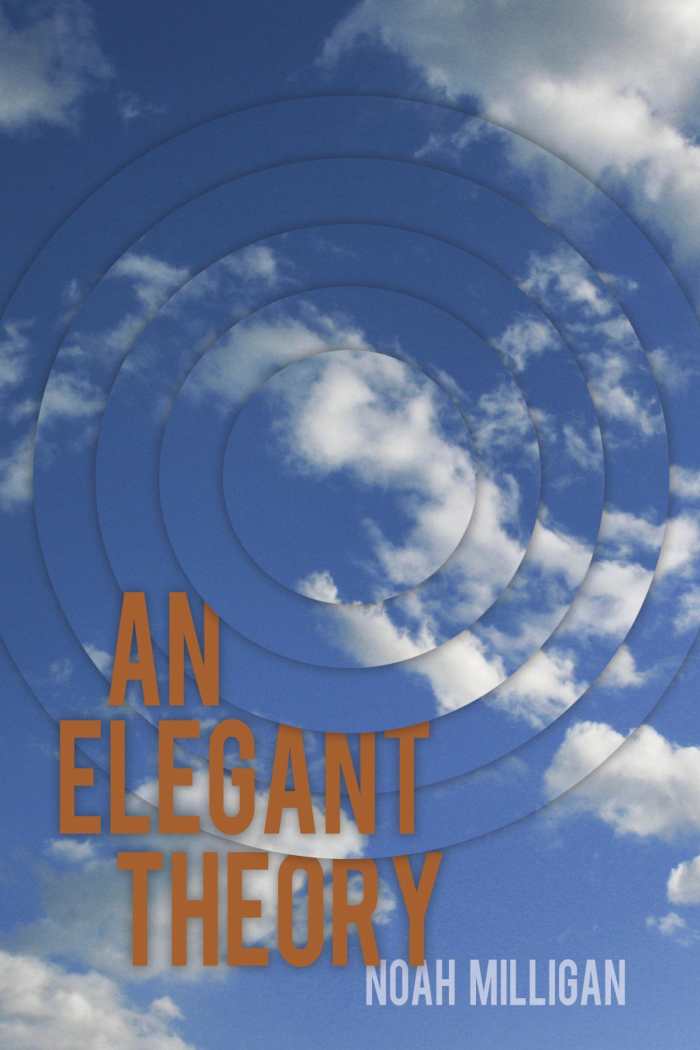
Noah Milligan
Central Avenue Publishing
Unknown $14.95 (320pp)
978-1-77168-099-8
Buy: Local Bookstore (Bookshop), Amazon
A mind-bending literary Rorschach test of a novel, An Elegant Theory evades strict conclusions.
Noah Milligan’s An Elegant Theory is a grand experiment of a novel, as much about the breathtaking grandeur of string theory and the beauty of a complex universe as it is about the difficulties of straining reality out from intricate delusions, particularly for those who hold their secrets close.
PhD candidate Coulter grapples with his ambitious dissertation, often working against the desires of his committee, and tries to balance the demands of his work with the mundane needs of his wife, Sara. Sara feels detached and alone in their Boston suburb, and Coulter, for whom connection has always been more elusive than theory, is at a loss when it comes to helping her. The return of his estranged mother only complicates matters, as do his increasingly more frequent lucid dreams. As Coulter draws near to a universe-altering scientific breakthrough, his own reality only becomes more muddled.
Just beyond the reach of scientific observation, the following things may or may not be true of Coulter’s life: His mother left him to join a cult. He is dealing with a pyromaniacal teenager. He is expecting his first child. He is suicidal. He is at risk of being expelled from MIT. His life is coming together. He is preparing to accept a Nobel Prize. He is grappling with loneliness and a dangerous obsession. He has just murdered his pregnant wife.
Milligan’s narrative crackles with a mix of danger, disassociation, hope, and despair. Coulter sometimes narrates; some scenes come via an omniscient observer. It becomes difficult, thrilling, and troubling to determine which scenes are reliable and which are mere misfires in the experiment of Coulter’s life, resulting in a novel that, while it proffers few certain answers, never ceases to engage.
An Elegant Theory is a literary Rorschach test, a mind-bending ride, in which “real” conclusions are elusive, and discovery always waits just beyond the next page.
MICHELLE ANNE SCHINGLER (October 31, 2016)
Fire Angels
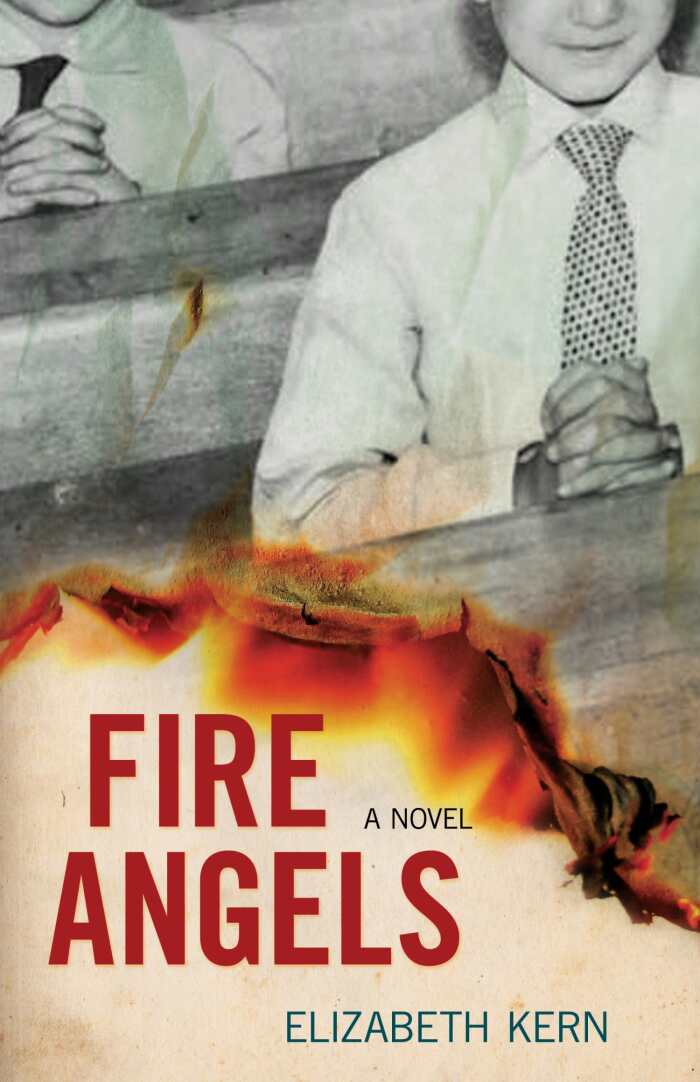
Elizabeth Kern
Chicago Review Press
Softcover $14.99 (320pp)
978-1-61373-629-6
Buy: Local Bookstore (Bookshop), Amazon
This is a heartbreaking and engrossing novelization of part of Chicago’s history.
Elizabeth Kern’s Fire Angels is a novelization of the tragic 1958 fire that destroyed Chicago’s Our Lady of the Angels School and killed ninety-two children and three nuns. The book recalls the horror of that day, and the impact it had upon the city and the nation.
Loving knowledge of Chicago adds a special dimension to Fire Angels. The close-knit, northwest-side neighborhood where Our Lady of the Angels once stood is well detailed and represented. Italian, Irish, and Polish families sent their children to the Catholic school, which had over 1,500 students.
In an interesting turn, the entity of fire itself becomes a character in the book. Fire takes many forms, so its narrative presence comes and goes, but the voice is as brash and street-smart as one of Chicago author Nelson Algren’s hustlers, while also sounding compulsively contrite. “When I’m contained, I’m quite harmless,” the fire notes. He’s the warmth within fireplaces, the fuel that cooks delicious meals, or the flickering beauty of candlelight. But once let loose, he can turn evil and voracious, without self-control.
Because Fire Angels is based on truth, its impact is intense. Real people lost their lives, and parents watched in horror as the bodies of their sons and daughters were brought out by firefighters. For the survivors, years of psychological trauma and skin grafts became part of their future, and a once tightly connected neighborhood changed into a troubled pocket of loss and death.
Kern’s portrait of the nameless boy who most likely started the fire, and his unfortunate fascination with flames and matches, is compelling. She shows that while the boy did light the matches, the building itself had already exhibited many fire-hazard conditions. The Catholic Church did not want to be exposed to lawsuits or investigations. Instead, the archbishop of Chicago urged parents to accept God’s will, “for in fire, gold is tested.”
The story is heartbreakingly engrossing, and part of Chicago’s living history.
MEG NOLA (November 18, 2016)
Haylow
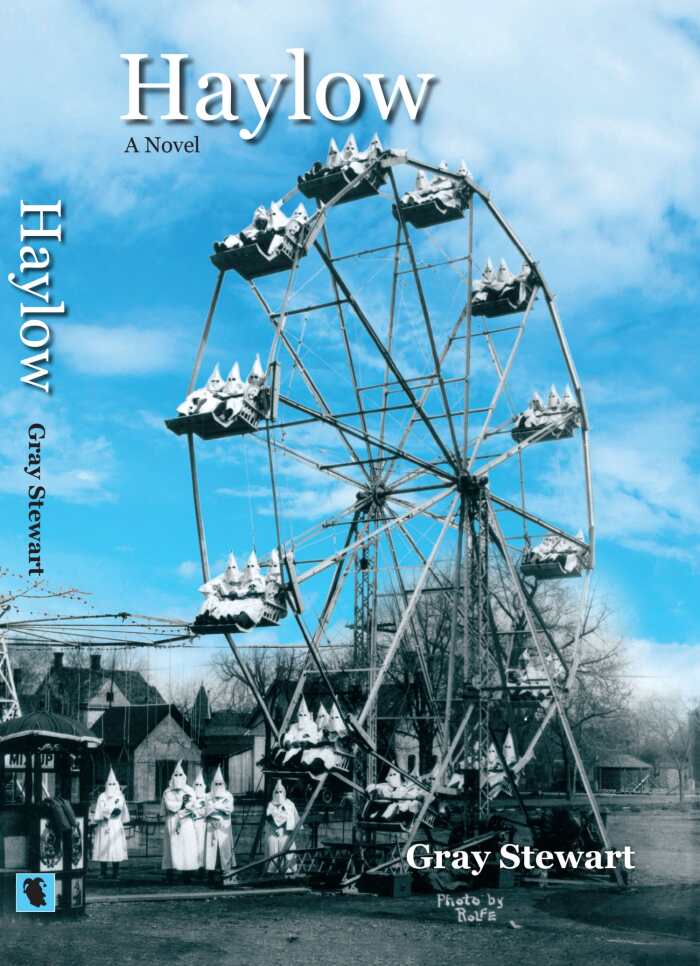
Gray Stewart
Livingston Press
Softcover $18.95 (293pp)
978-1-60489-174-4
Buy: Amazon
With a surety of time and place, this biting novel depicts a South still marked by racism.
In Gray Stewart’s intriguing Haylow, Travis Hemperly is lured back to his hometown of Atlanta by a surprising job offer to teach history at one of the South’s oldest African-American colleges, as one of its few white faculty members.
Stewart’s knowledge of the South gives Haylow a surety of tone and place. The novel is set in 1996, after the Olympics close and the fanfare and chaos around them finally die down. Though Travis is a Georgia native, he’s lost his Southern accent after years up north; meanwhile, his father, Henry, is an old-guard Southerner and hosts a radio show on Confederate Talk Radio.
Stewart’s diverse characters form a cohesive story, related with insight and few judgments. Rhett, Travis’s shifty skinhead neighbor, hates the police, minorities, and even a few white people. Travis’s Uncle George, a “Budweiser and bourbon man,” lives in the Blue Ridge mountains with his fishing rod and rifle, trying to stave off old age and a changing world. Fellow professor A. B. Longman proves to be Travis’s true friend regardless of color lines, welcoming him to the realm of “Blackademia.” And Dr. Kwazi Kalamari—another faculty member—is particularly memorable, with radical beliefs now considered reactionary by the college administration.
Though Travis’s historical purview was never focused on African-American matters, his new teaching position broadens his perspective. He recalls a story his father once told, about the brutal murder of a black man, committed years ago near his family’s turpentine farm in Haylow, Georgia. Travis takes a spiraling path back to Haylow, a swampy town “full of meanness and snakes.” This quest, coupled with Dr. Kalamari’s outrage-inducing discovery of Henry’s radio program, causes Travis to inherit the sins of not just his father, but the generations before.
Through deftly alternating perspectives and with quiet, occasionally biting humor, Haylow depicts Atlanta at the end of the twentieth century, still marked by the Civil War and decades of racial conflict yet moving toward its future as a capital of the New South.
MEG NOLA (November 28, 2016)
Hindsight
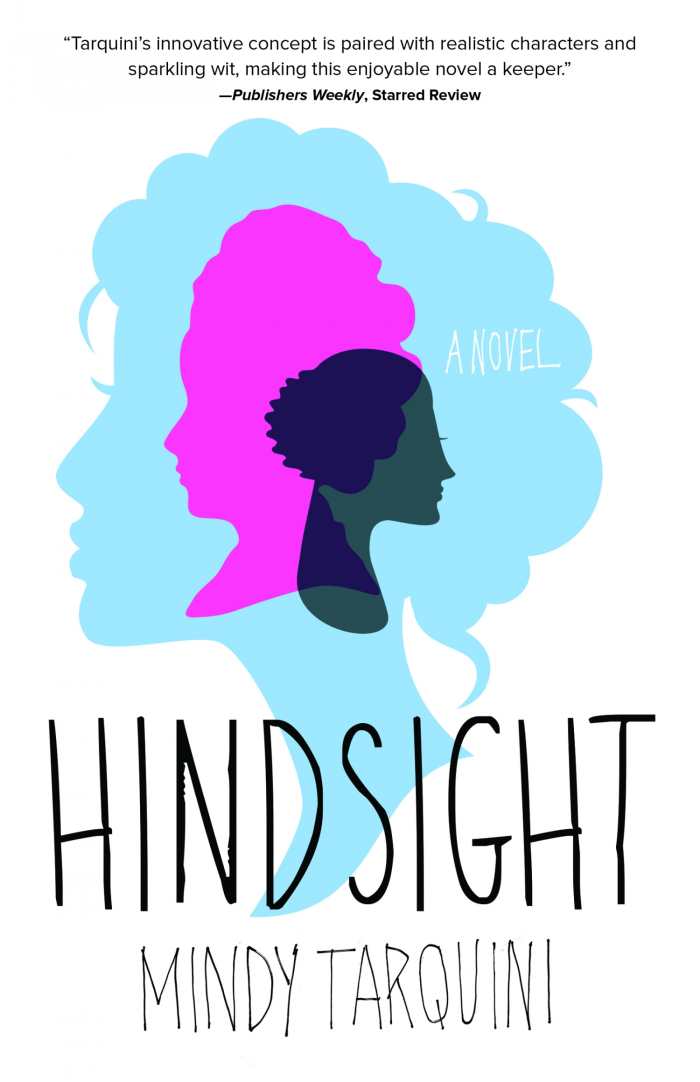
Mindy Tarquini
SparkPress
Softcover $16.95 (315pp)
978-1-943006-01-4
Buy: Local Bookstore (Bookshop), Amazon
This intriguing chronicle of past lives emphasizes the importance of acting in the here and now.
Mindy Tarquini’s Hindsight is an evocative and inventive reincarnation tale that chronicles the past lives of an intriguing assortment of characters as they seek redemption for long-ago wrongs, yearning to influence the course of their next incarnations.
An uproarious but forlorn Chaucer professor, Eugenia is haunted by memories of her former lives. She was once Chaucer’s confidante and inspiration for a character in The Canterbury Tales, as well as a collaborator in a horrific Bavarian event, now four hundred years in the past. She moves between accepting her hindsight—the ability to remember past lives—and speculation that she’s mentally ill. When leaving one life for another, she forfeits lovers, contentment, and stability. Eugenia wants a rational explanation, and to avoid repeatedly confronting her grief. Her wrenching misery is conveyed in impeccable prose.
Nearly everyone Eugenia knows also existed in her past. Some don’t recognize her. Some do—especially her student, Friedrich, who pushes her to explore their tainted history, hoping to expiate his transgressions before he’s dragged into his next life. What follows is an intense, speculative, and multilayered unveiling of characters’ varied incarnations throughout time, including the influence they’ve had on one another and the consequences of their deeds. Lively and controlled writing reveals the intersection between past and present, and the novel’s otherworldliness never overshadows its pathos and humanity. Witty dialogue, underscored by Eugenia’s entertaining voice, prevents Hindsight from falling into gloominess.
Drawing on snippets of wisdom from long-gone literary giants, including Chaucer, Dante, Goethe, and Kipling, Tarquini illustrates the eternal universality of human behavior. And while the prospect of getting a second chance at life is tantalizing, Tarquini’s narrative emphasizes the importance of acting in the here and now: saying what should be said, forgiving what needs to be forgiven, embracing opportunities to deepen connections with others, and seizing moments of happiness when they’re presented. Consequently, Hindsight is a sustaining and deeply personal reading experience.
AMY O'LOUGHLIN (November 17, 2016)
Splinterlands
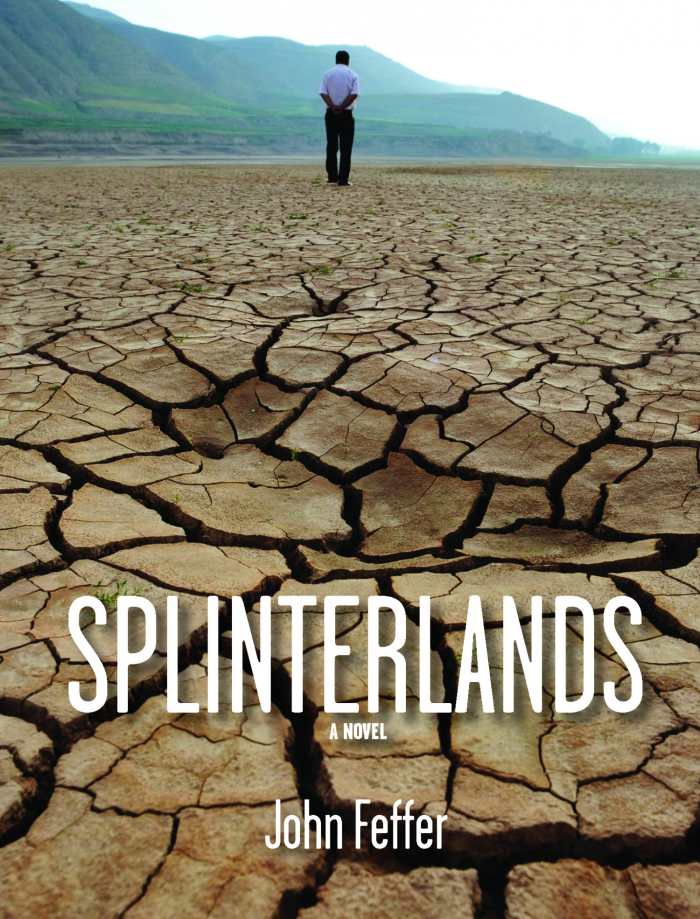
John Feffer
Haymarket Books
Softcover $13.95 (130pp)
978-1-60846-724-2
Buy: Local Bookstore (Bookshop), Amazon
A wild ride through a bleak future casts a harsh, thought-provoking light on today’s decisions.
John Feffer paints the gritty portrait of an all-too-believable future dystopia in his novel Splinterlands.
Feffer brings a unique blend of experience and insight to what what might first seem a common-variety, cautionary science-fiction tale. Serving as director of the Foreign Policy in Focus project at the Institute for Policy Studies, Feffer doesn’t just imagine the world of 2050, he extrapolates from his encyclopedic knowledge of the state of affairs in 2016, incorporating political, technological, and social trends to create a vivid and convincing world full of mistakes that, in real-life 2016, mostly have yet to happen.
Feffer leads this tour of the world through the eyes of the fictional Julian West, a scientist and author of the hugely impactful book Splinterlands. While a bit confusing at first, it’s an artful touch, and, combined with footnotes by a separate narrator that often cast doubts on West’s version of events, the result is a book that reads like an engaging mystery that just happens to take place in the future.
West seeks out his family members in Europe, China, Africa, and a commune in Vermont, looking for some form of reconciliation for past wrongs, but with a hidden agenda that reveals itself only in the final few pages of the book.
At times, West’s excursions, undertaken through virtual reality, can seem less interesting than the ideas and fictional causes of the situations he steps into. But Feffer is usually able to weave the drama, the projections, and the imaginings into a cohesive whole: a world where the European Union no longer exists, and CRISPR genome-editing technology plays a prominent role.
Splinterlands serves as entertainment, but also as provocation; toward the end of the book, West muses:
Thirty-five years and endless catastrophes later, on a poorer, bleaker, less hospitable planet, it’s clear that we just weren’t paying sufficient attention.
Feffer’s book is a wild ride through a bleak future, casting a harsh, thought-provoking light on that future’s modern-day roots.
PETER DABBENE (November 28, 2016)
The Hidden Keys
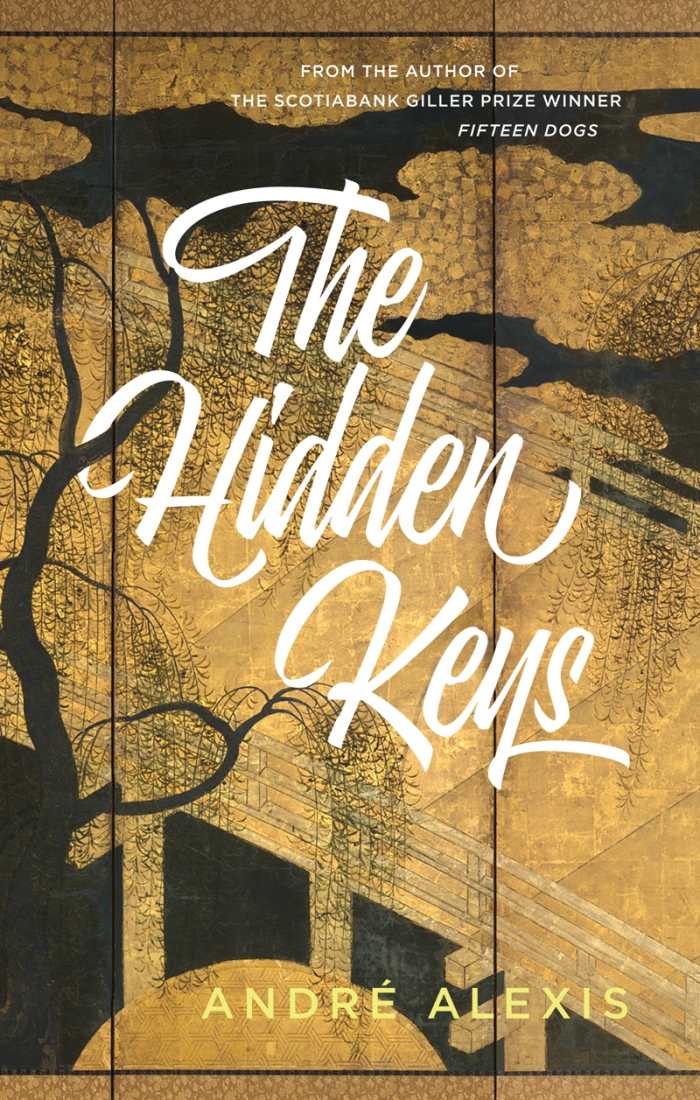
André Alexis
Coach House Books
Softcover $17.95 (232pp)
978-1-55245-325-4
Buy: Local Bookstore (Bookshop), Amazon
This is a joyful and intelligent adventure, populated by honorable thieves and winsome misfits.
André Alexis’s The Hidden Keys is set in the back alleys and concealed corners of Toronto, places populated by honorable thieves and winsome misfits, peppered with penetrable fortresses and colored by hope. In this novel that teems with quiet beauty, a troubled woman’s treasure hunt sends those around her tumbling toward discovery.
When Tancred first encounters Willow Azarian at a decrepit bar, she does not appear to to be the kind of woman who transforms a man’s fortunes. In the last thralls of drug addiction, she relates to him a story: she is the daughter of a billionaire, bequeathed one in a series of elaborate clues that may lead to fortunes unfathomable. Tancred is dubious, but Willow’s story checks out, and he is bound to follow the trail, even after her death.
Tancred proves to be a gentleman of a thief: he is reluctant to break any promise made to Willow but is equally reluctant to involve his friends, particularly Daniel, the detective working to discover who’s stealing the Azarians’ artifacts. He compromises his own safety more than once, to protect others, and preserves his own integrity, even when deceiving his way into Azarian homes. Two less savory figures from the neighborhood are at his heels, though, and are determined to snatch away whatever treasure awaits him.
The narrative unfolds with elegance, following Tancred through a series of improbable heists that involve directions relayed in verse and microchips embedded in prosthetic parts. Compelling family stories—from Tancred and Willow, but also from those who revolve around them, including the novel’s villains—drive the plot as much as the promise of wealth, and Tancred’s sense of honor, even in the midst of violence and betrayal, is a continual source of charm. Philosophical musings, biting humor, inventive details, and evocative lines only add to the story’s appeal.
The mystery itself does not disappoint, though the events that lead up to the reveal are as much of a gift as the endpoint itself. This unique adventure is a joyful and intelligent undertaking.
MICHELLE ANNE SCHINGLER (November 28, 2016)
The Land South of the Clouds
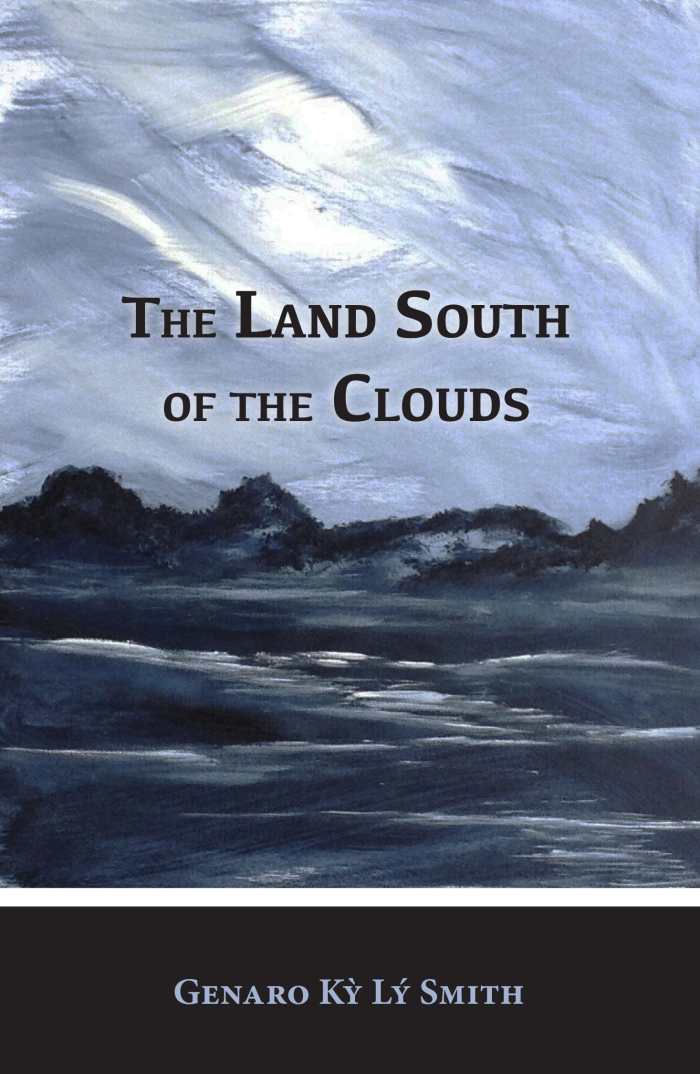
Genaro Ky Ly Smith
University of Louisiana Press
Unknown $20.00 (341pp)
978-1-935754-80-0
Buy: Local Bookstore (Bookshop), Amazon
This sharp, chromatic elegy for childhood offers an insightful look at the complexities of inherited grief.
The Land South of the Clouds, by Genaro Kỳ Lý Smith, charts a lost son’s turbulent course from an immigrant neighborhood in Los Angeles a few years after the Vietnam War, to Vietnam in 1997 and back. With immense talent for drawing absence and longing, Smith presents a searing novel about a family torn by history.
Long-Vanh, a half-black, half-Vietnamese ten-year-old, lives in fear of his mother’s departure. Tortured by the knowledge that her father is imprisoned in a Vietnamese reeducation camp, she threatens to leave home to join his side, with a Samsonite suitcase that represents the weight of her sorrow. When the long-foretold abandonment takes place, Long-Vanh is forced to revise the truth in order to survive. This heartbreaking premise dramatically crescendos in a moment of misguided nationalism that puts an entire community at risk.
Amid the story of the problems of being raised as an Amerasian child, the author’s ability to overlay a volatile atmosphere with silence, action with stasis, and despair with fruitless hope stands out. Days are punctuated by the wait for mail from Vietnam. News of Long-Vanh’s grandfather—overheard and translated—haunts Long-Vanh’s dreams and adds to his mother’s isolation in America. As Long-Vanh experiences bullying, witnesses his parents’ strife, discovers his father’s secrets, and fights to find a place in a city where he seems to remind everyone of his in-betweenness, the snare of his mother’s survivor’s guilt begins to fray.
Strong characters such as Long-Vanh’s cousin Phượng and Uncle Ngô bring necessary light to the emotional material. Phượng especially—despite her own family’s tragedies—grows into a lifeline for the troubled protagonist.
With an eye for the multiple faces that people reveal under pressure, the novel offers an insightful look at the complexities of inherited grief. This sharp, chromatic elegy for childhood blooms into a story of finding a way back from pain.
KAREN RIGBY (November 16, 2016)
The Seed Apple
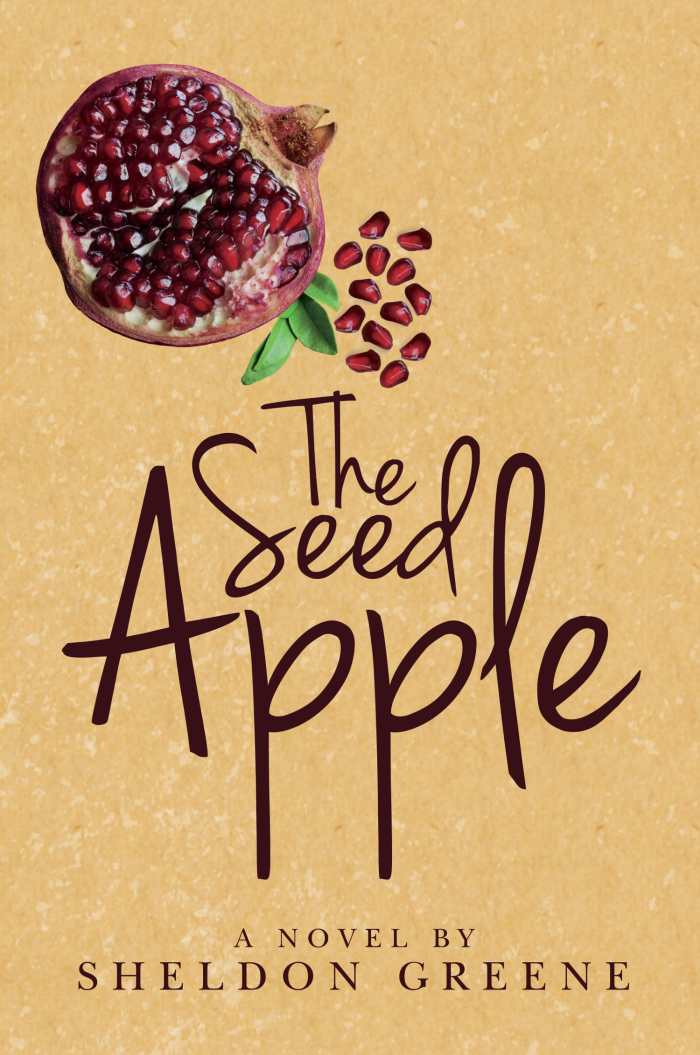
Sheldon Greene
Kinur Pub
Softcover $14.99 (314pp)
978-1-5236-1256-7
Buy: Local Bookstore (Bookshop), Amazon
The Seed Apple is written with a delightful mix of modernity, ancient history, and lore.
Sheldon Greene’s The Seed Apple is the multicontinental story of a family whose improbable history crosses barriers of time and religion. Drawing from precolonial American history, the Jewish Exodus, and the environmental movement, the book unites the allure of mythology with the dirty dealings of life.
Mendel Traig’s doctor sends him to Southern California for health reasons. Traig’s rest is interrupted, though, when he is drawn into the town’s drama over the construction of a large tower by the mysterious Binyan family. Any chance of a quiet vacation disappears.
Once Traig hears that the Binyans claim to be descendants of the Lost Tribe of Israel, and that they have lived in the Americas since the time of King Solomon, his curiosity is piqued. He immerses himself not just in the Binyans’ remarkable history, but in their contemporary family politics.
Greene’s prose is witty and spare. Traig, who first appeared in Greene’s Lost and Found, emerges as a well-defined character: weary, and unsure of the modern rush of technology; balancing his history in the concentration camps of Eastern Europe with his current life of quiet solitude, he works to acknowledge his deeply repressed loneliness. The supporting cast is similarly well-defined, unusual, and reassuringly real. Characters drive the plot and ground the mystical, unpredictable story in an accessible way, though some sections do require a second reading.
The Seed Apple is written with a delightful mix of modernity, ancient history, and lore. Sheldon Greene’s careful writing leads to a work strong both as speculative fiction and for its stories of daily life. This is an entirely fantastic tale that is as much about the nuances of relationships as it is about the mysterious family at its center, whose genealogy reaches back to King Solomon.
CONSTANCE AUGUSTA A. ZABER (November 3, 2016)
The Train to Orvieto
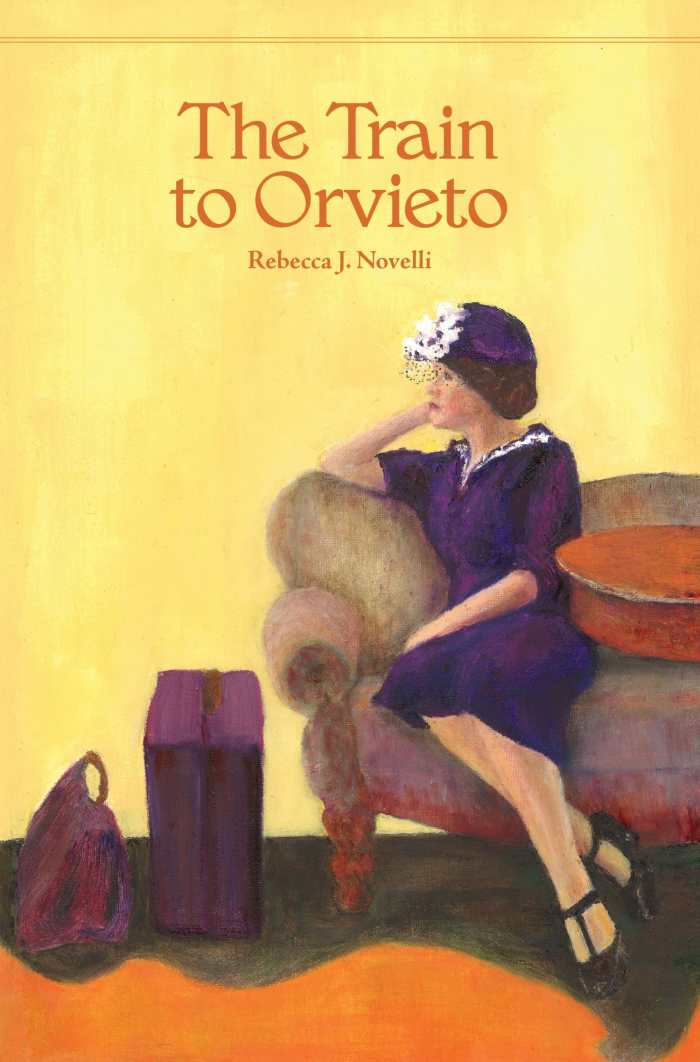
Rebecca Novelli
Black Heron Press
Softcover $17.95 (400pp)
978-1-936364-23-7
Buy: Local Bookstore (Bookshop), Amazon
With careful settings and raw seams, The Train to Orvieto is a fascinating journey of sins come home to roost.
The Train to Orvieto details a Midwestern ingenue’s love for art—as narrated by her daughter—and the folly that sparks a lifetime of regret. Rebecca Novelli’s striking novel is an intimate, elegant portrait of an individualist who embraces an expatriate life, and of women’s roles in the twentieth century and the passions that guided them.
Distinct sections focus on Willa and her main loves. An impulsive dreamer from 1930s Ohio who moves to Italy to become an artist, Willa commits social errors that brand her as an outsider in the circumspect town of Orvieto. Novelli refreshes the classic subject of a woman who seeks self-discovery abroad, through a dramatic plot that pulls her flawed protagonist from an emotionally withering marriage to an affair that spans across years. Tension builds toward 1968, when Willa’s daughter, Fina, discovers the secret that soured her parents’ relationship.
Novelli—also a painter—deftly creates scenes in the Marcheschi villa that draw a stark contrast between Willa’s failed ambitions and the rustic truth of living in her husband’s family home. Willa gradually transforms from a naive, reckless young American to a capable landowner who continually defies expectations. The journey between takes detours and predictable turns yet portrays Willa’s disillusionment without judgment for her decisions. For all the book’s emphasis on whether women can shape their own fate in a time that favors tradition, its the subtler themes, like that of keeping faith amid darkness, that most stand out.
Few characters exemplify this quality more than Michel Losine, a Jewish gem dealer and widower whose family suffered the brutality of war. Ever the gentleman who has a cool demeanor and is a capable orchestrator of events, his success belies restrained vulnerability. The struggle between his loyalties to the living and the dead add depth to his actions. Fina displays a similar ambiguity, to a lesser degree. Her arc, if sparer and less assured than her mother’s, offers an alternative to resignation. Her efforts to pave-over past conflicts reveal a different strength.
With careful settings and raw seams, The Train to Orvieto is a fascinating journey of sins come home to roost.
KAREN RIGBY (November 28, 2016)
Wild Girls

Erica Abeel
Texas Review Press
Softcover $24.95 (344pp)
978-1-68003-103-4
Buy: Local Bookstore (Bookshop), Amazon
With literary finesse, the novel leaps through its wild moments with ease.
Erica Abeel’s bright and brainy Wild Girls follows three friends from their 1950s days at “prestigious but offbeat” Foxleigh College, through the decades following graduation. With chapters shifting from quirky Brett to ambitious Audrey to indolently beautiful Julia, Wild Girls hits a sweet spot between page-turner romantic fiction and literary finesse.
After their close-knit collegiate years, Brett, Audrey, and Julia take different paths in life, with different notions of happily ever after. They are determined to avoid predictable post-graduation engagements to rising young Ivy Leaguers, and futures of babies, cultivated domesticity, and upward social mobility.
Brett heads to Paris, living in fleabag hotels and befriending some of the Beat Generation writers, including Allen Ginsberg. Manhattan career girl Audrey sets her sights on publishing best-selling novels. Julia lets her photography career lapse to travel and enjoy life with her entrepreneurial husband, Bodie, a “creator of worlds” and hardly the boring Brooks Brothers type; he wears red sneakers to their wedding, while Julia’s bohemian bridal gown involves vintage water-stained satin and lace.
Wild Girls is rich with interesting characters, including the Yoko Ono-influenced Rinko Park, but Abeel’s portrayal of Allen Ginsberg is particularly vivid. Still conflicted about being gay, the Ginsberg of the novel is charismatic, brilliant, and maddeningly ambiguous about his feelings toward Brett. Later included in Ginsberg’s biography as merely “girl unidentified” in a photo, Brett moves on from the experience with her ego intact, unlike many other women who got caught up in the Beat vortex.
Through highs and lows, illness and occasional disillusionment, Brett, Audrey, and Julia quarrel and reunite, somehow always returning to their imperfect but enduring friendship. Abeel’s women can be flawed, tending to focus more on themselves rather than any social ideals, but they are all memorably intriguing.
Wild Girls moves with essential verve—like Brett, who, as a lithe young dance student, lept in an impromptu series of tour jetés “as though air [were]” her home element.”
MEG NOLA (October 27, 2016)
Hannah Hohman
